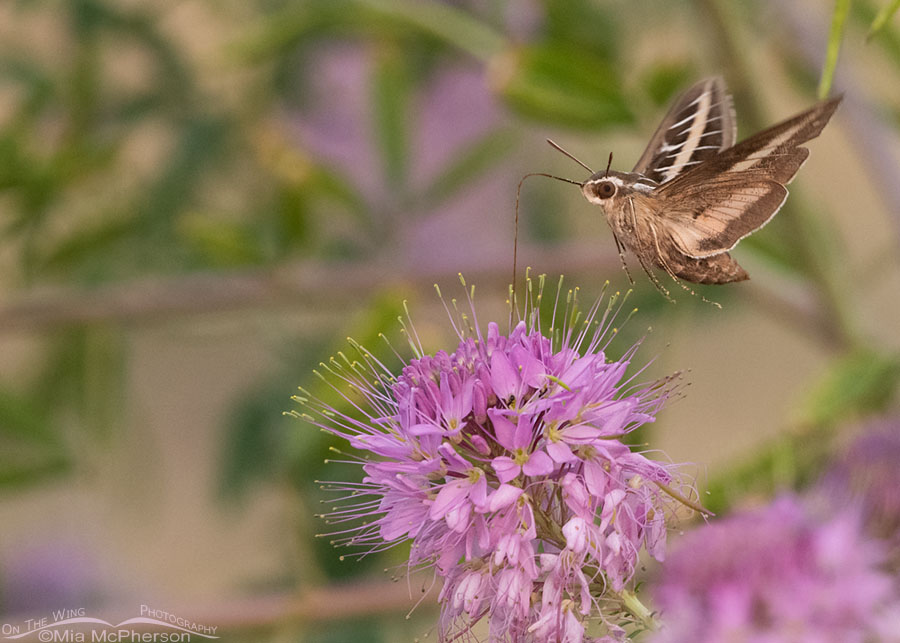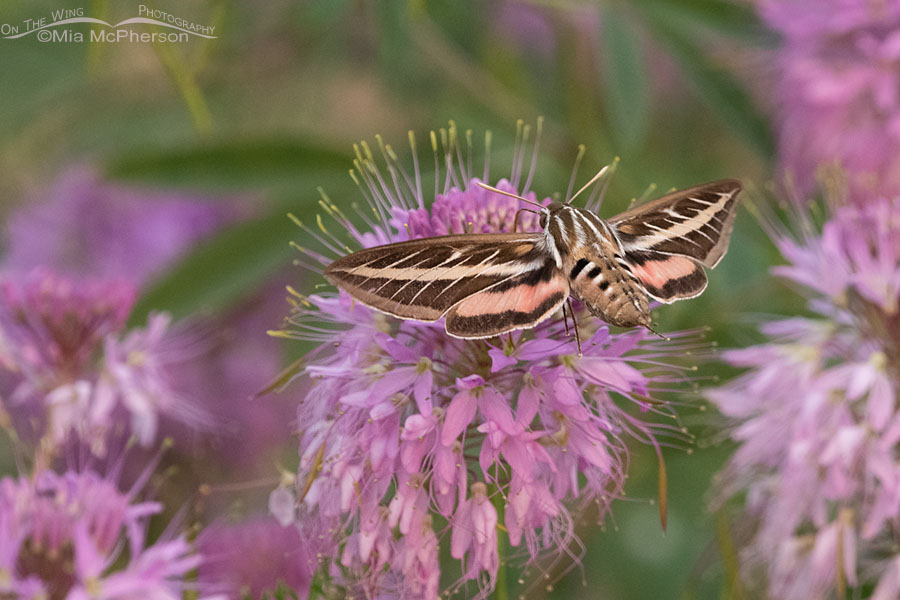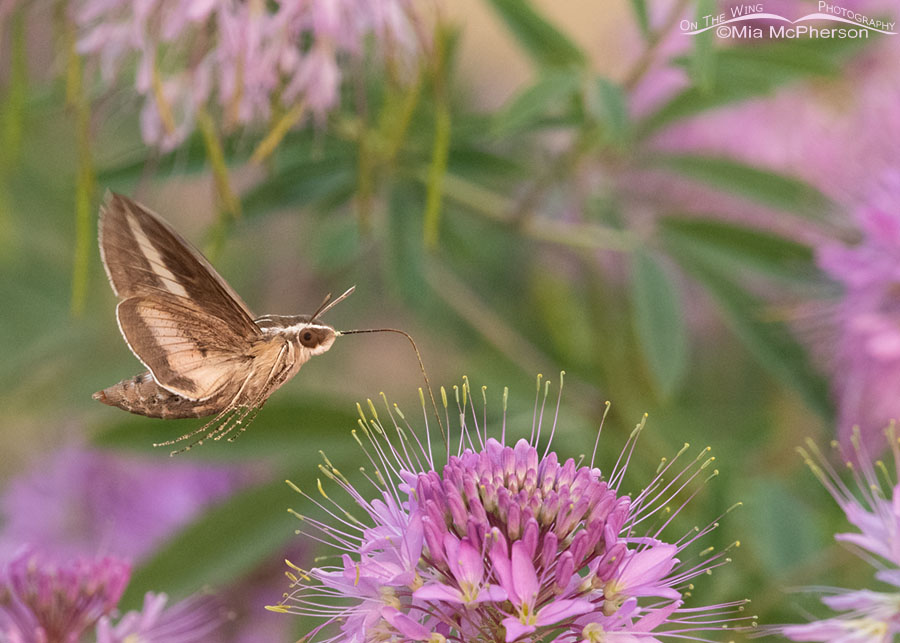 White-lined Sphinx moth feeding from a Rocky Mountain Bee Plant – Nikon D810, f7.1, 1/2000, ISO 2000, Nikkor 500mm VR with 1.4x TC, natural light
White-lined Sphinx moth feeding from a Rocky Mountain Bee Plant – Nikon D810, f7.1, 1/2000, ISO 2000, Nikkor 500mm VR with 1.4x TC, natural light
Of the hundreds of White-lined Sphinx moth photos I took two days ago I picked three to share today of the moth feeding on Rocky Mountain Bee Plant. It was very smoky that morning and I used a high ISO to have enough shutter speed to capture the fast moving moth as flew amongst the delicate looking pink wildflowers on Antelope Island.
Rocky Mountain Bee Plant looks delicate but these plants are drought resistant and are blooming profusely this year despite our exceptional drought conditions. They would be great native plants to use when xeriscaping to replace bluegrass lawns.
Note: It is xeriscaping not xeroscaping. I learned about xeriscaping back in the late 80’s when I took a Master Gardeners class in Columbus, Georgia. It is a shame the practice of xeriscaping hasn’t caught on more than it has, it could save tons of water which is precious here in Utah.
 Back view of a White-lined Sphinx moth – Nikon D810, f7.1, 1/2000, ISO 2500, Nikkor 500mm VR with 1.4x TC, natural light
Back view of a White-lined Sphinx moth – Nikon D810, f7.1, 1/2000, ISO 2500, Nikkor 500mm VR with 1.4x TC, natural light
Photographing the White-lined Sphinx moth nectaring from the Rocky Mountain Bee Plant was challenging due to the low light the smoky haze caused but it also seemed to intensify the colors of the moth at times. I wanted to include this back view of the moth to show the colors that frontal views don’t often show. This photo also shows the white line on dorsal aspect of the forewings which this sphinx moth is named for nicely.
 White-lined Sphinx moth with pollen covered legs – Nikon D810, f7.1, 1/2000, ISO 2000, Nikkor 500mm VR with 1.4x TC, natural light
White-lined Sphinx moth with pollen covered legs – Nikon D810, f7.1, 1/2000, ISO 2000, Nikkor 500mm VR with 1.4x TC, natural light
I picked this last photo to share because the legs of the moth are covered in pollen. As these moths move from plant to plant they carry the pollen with them and pollinate as they feed on the nectar. They are beautiful pollinators and I appreciate what they do.
I will share more White-lined Sphinx moth photos soon.
Life is good.
Mia
Click here to see more of my insect and spider photos. Click here to see more of my flower, shrub and tree photos.


Wow! Thankfully, even moths can’t escape your extraordinary vision. Until I saw these shots I never really knew how moths feed and pollinate. Once again you show us how everything in nature has a job. Great pics Mia. Thanks.
A-MAZING!
Beautiful photos of a beautiful insect!
Great images! We are scheduled to xeriscape the front yard next spring for starters. Expense is the main drawback but will save much needed water.
Just beautiful! I really like the dorsal view showing off all those gorgeous markings!
Absolutely gorgeous – and hooray for the pollinators.
Beautiful shots!